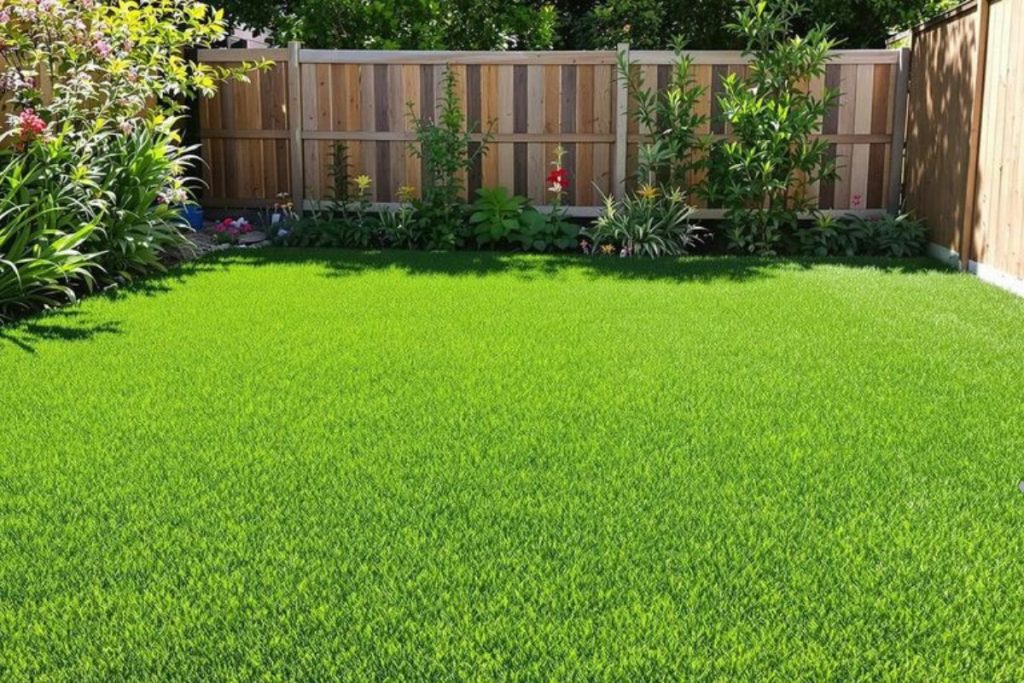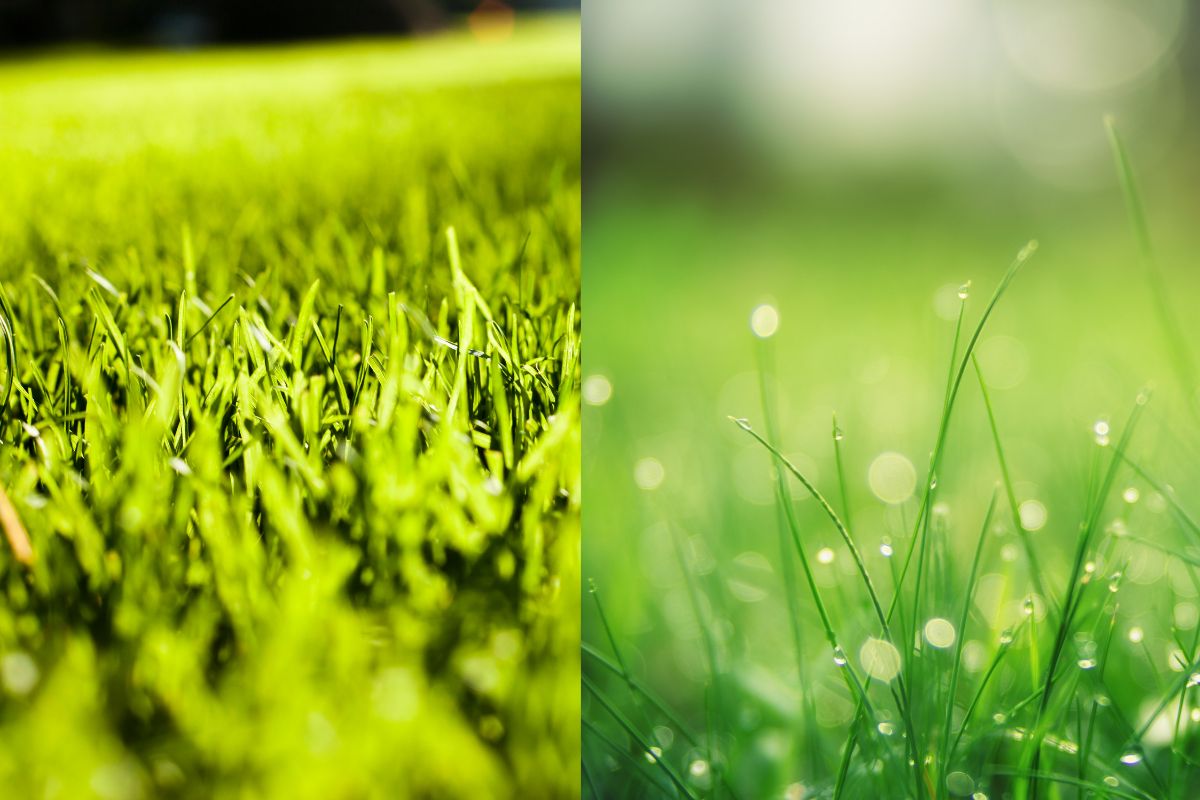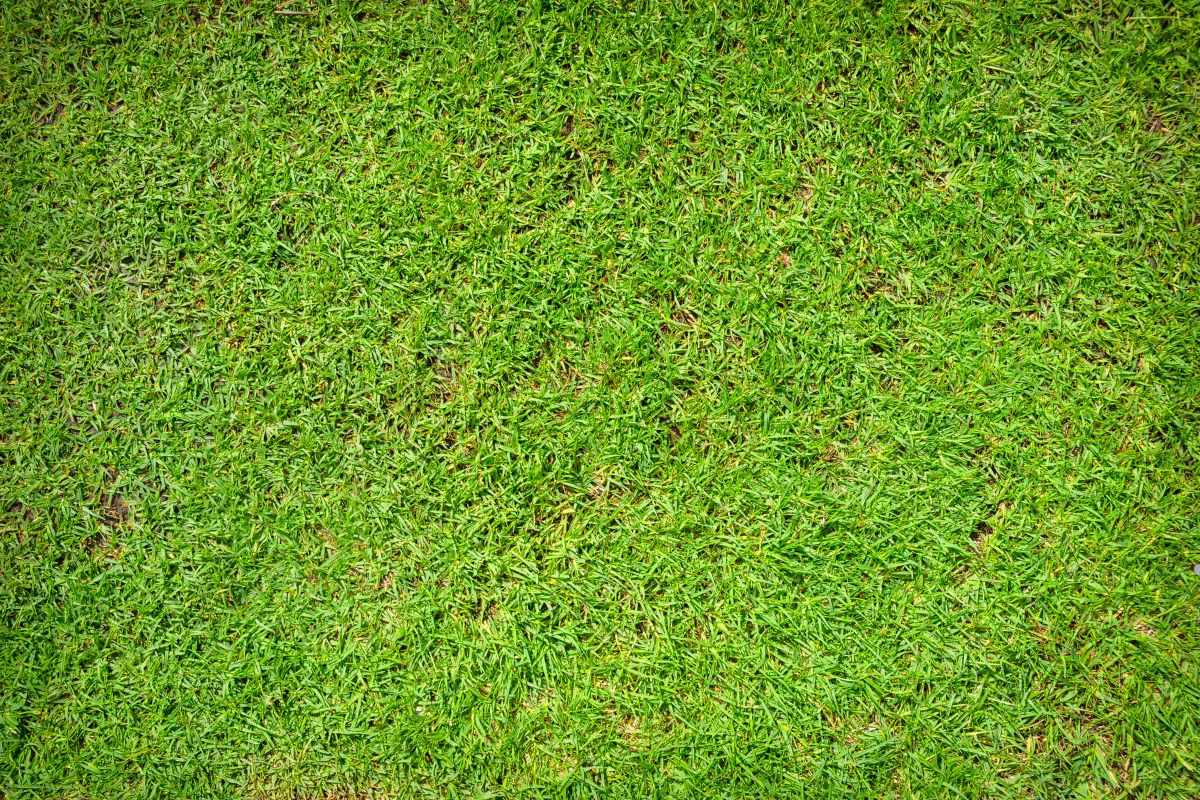
Choosing between synthetic turf and non-native natural grass for your home can feel like a big decision. Both options have their perks and drawbacks, and what works for one person might not work for another. Whether you’re thinking about cost, appearance, or how it affects the environment, there’s a lot to think about. This guide will break it down for you, so you can figure out what makes the most sense for your yard.
Key Takeaways
- Synthetic turf doesn’t need watering or mowing, but it can get really hot in the sun.
- Non-native natural grass looks and feels more natural, but it often requires a lot of water and care.
- The upfront cost of synthetic turf is higher, but it usually costs less to maintain over time.
- Both options have environmental impacts—synthetic turf is made from plastic, while non-native grass can strain water resources.
- Think about your local weather and how much time you want to spend on upkeep when making your choice.
Before installing synthetic turf or non-native grass, ensure your yard is properly prepared with our professional Yard Clean Up Services. We’ll clear debris and create a clean, level foundation for a flawless installation, enhancing your outdoor space.
Understanding the Basics of Synthetic Turf and Non-Native Natural Grass
What Is Synthetic Turf?
Synthetic turf is a man-made alternative to natural grass, designed to mimic the look and feel of a lush lawn. It’s typically made from a combination of polyethylene or nylon fibers that are woven into a backing material to create a grass-like surface. One of its standout features is its low water requirement, which makes it a popular choice in areas where water conservation is a priority. Unlike natural grass, synthetic turf doesn’t need mowing, fertilizing, or irrigation, making it a low-maintenance solution for homeowners and businesses alike.
Defining Non-Native Natural Grass
Non-native natural grass refers to grass species that are not originally from the region where they are planted. These grasses are often chosen for their aesthetic appeal or specific functional qualities, like durability or shade tolerance. Kentucky bluegrass, for instance, is a common choice in many U.S. lawns but isn’t native to North America. While these grasses can create a lush, green lawn, they often require significant resources to thrive, including regular watering, fertilizing, and pest control.
If you’re considering non-native natural grass, proper lawn irrigation is essential for maintaining a healthy, vibrant lawn. Our Lawn Irrigation Services provide efficient solutions to ensure your grass gets the right amount of water, helping you save on water bills and keep your yard thriving.
Key Differences Between the Two
| Feature | Synthetic Turf | Non-Native Natural Grass |
| Water Usage | Minimal | High |
| Maintenance | Low | High |
| Lifespan | 10-20 years | Seasonal, requires replanting |
| Environmental Impact | Reduced water use, but non-biodegradable | Can support ecosystems, but high resource use |
- Synthetic turf is ideal for those looking for a low-maintenance yard.
- Non-native grass offers a more traditional look but demands more upkeep.
- The choice often comes down to climate, personal preference, and environmental priorities.
When deciding between synthetic turf and non-native natural grass, it’s worth considering how much time, effort, and water you’re willing to invest in your lawn.
Environmental Impact of Synthetic Turf vs. Non-Native Natural Grass for Your Home
Water Usage and Conservation
One of the biggest advantages of synthetic turf is its ability to save water. Unlike non-native natural grass, which typically requires regular watering to stay green and healthy, synthetic turf doesn’t need any irrigation. This can be a game-changer, especially in areas where water conservation is critical. On the other hand, natural grass contributes to the environment by absorbing water into the soil, which helps replenish groundwater levels—a benefit that synthetic turf lacks.
Carbon Footprint Considerations
When it comes to carbon emissions, the story gets a little tricky. Synthetic turf systems often exhibit greater environmental impacts than natural grass in certain categories, such as the energy-intensive production process and eventual disposal challenges. Non-native natural grass, while requiring lawnmowers and fertilizers (both of which contribute to carbon emissions), generally has a lower overall carbon footprint over its lifetime.
Impact on Local Ecosystems
Non-native natural grass can sometimes disrupt local ecosystems, especially if it requires chemical fertilizers and pesticides to thrive. These chemicals can seep into nearby water sources, harming aquatic life. Synthetic turf, while free of those chemicals, creates a heat island effect due to its heat retention properties, which can negatively affect local temperatures and wildlife. Balancing these environmental trade-offs is key when deciding between the two options.
Cost Analysis: Synthetic Turf vs. Non-Native Natural Grass for Your Home

Initial Installation Costs
When it comes to upfront costs, synthetic turf is often the pricier option. Installing artificial grass can range from $5 to $20 per square foot, depending on the quality and labor involved. On the other hand, non-native natural grass typically costs between $1 and $5 per square foot for sod installation. This means synthetic turf could cost several times more initially, but it’s worth considering the long-term financial picture.
Long-Term Maintenance Expenses
The maintenance costs for these two options differ significantly. Synthetic turf requires less frequent upkeep but can still add up over time due to cleaning, repairs, and eventual replacement. According to a cost analysis, synthetic turf maintenance can range from $13,720 to $39,220 annually. Meanwhile, non-native natural grass starts at $8,133 per year but can climb higher depending on water use, fertilizers, and pest control. Choosing between the two often depends on how much time and money you’re willing to dedicate to upkeep.
Resale Value Implications
A well-maintained lawn—whether synthetic or natural—can enhance the curb appeal of your home. However, opinions are divided on which adds more value. Non-native natural grass tends to appeal to traditionalists who value its authenticity. Synthetic turf, on the other hand, is favored for its low-maintenance appeal, especially in regions where water conservation is a priority. The impact on resale value may vary depending on local preferences and climate conditions.
When weighing costs, think about more than just the numbers. Consider how much effort you’re willing to invest in maintenance and whether the upfront expense aligns with your long-term goals.
Choosing between synthetic turf and non-native natural grass can be tough, but we’re here to help! Call us now for expert guidance and assistance in making the best decision for your yard.
Aesthetic and Functional Differences Between Synthetic Turf and Non-Native Natural Grass
Visual Appeal and Realism
Synthetic turf has come a long way in mimicking the look of real grass. Many modern options are designed with varying shades of green and even brown flecks to replicate the natural imperfections of grass. However, non-native natural grass often wins in terms of authenticity—it’s alive, after all. The downside? Non-native grass can struggle to stay lush and green in climates that don’t suit it, leading to patchy or yellowed areas. Meanwhile, synthetic turf stays consistently green year-round, rain or shine.
Comfort and Usability
When it comes to comfort, non-native grass provides a softer, cooler surface to walk or play on, especially during hot days. Synthetic turf, on the other hand, can get surprisingly hot under direct sunlight, making it less ideal for barefoot activities. For usability, synthetic turf edges out by being ready for use immediately after rain, as it drains quickly and doesn’t turn muddy. Non-native grass often requires time to dry out before it’s suitable for activities.
Durability Under Different Conditions
Durability is where synthetic turf shines. It can handle heavy foot traffic, pets, and even sports without showing much wear. Non-native grass, however, can get damaged or develop bare spots in high-use areas. That said, natural grass has the advantage of self-repair—it can grow back over time with proper care, unlike synthetic options, which may require patching or replacement if damaged.
Choosing between synthetic turf and non-native natural grass often comes down to what matters most to you—low maintenance and durability, or natural beauty and comfort.
Health and Safety Considerations for Synthetic Turf and Non-Native Natural Grass
Allergen Concerns
When it comes to allergies, natural grass can be a mixed bag. Many types of non-native grass produce pollen, which can trigger hay fever and other respiratory issues for sensitive individuals. On the other hand, synthetic turf doesn’t produce pollen, but it can still collect allergens like dust and debris, which might require regular cleaning. For those with severe allergies, synthetic turf may be the better option, though it’s not entirely allergen-free.
Heat Retention and Surface Temperature
One major drawback of synthetic turf is its tendency to retain heat. On a sunny day, the surface of synthetic turf can become significantly hotter than natural grass, sometimes reaching temperatures that make it uncomfortable—or even unsafe—to walk or play on. In contrast, natural grass stays cooler due to its moisture content and natural properties.
| Surface Type | Average Temperature on a Hot Day |
| Synthetic Turf | 120°F – 180°F |
| Non-Native Grass | 80°F – 100°F |
If you live in a hot climate, this is something to seriously consider, especially if kids or pets will be using the space.
Chemical Exposure Risks
Synthetic turf often involves the use of chemical treatments, from the infill materials to the adhesives used during installation. Over time, these substances can break down and potentially release harmful compounds. Non-native natural grass, meanwhile, might require fertilizers, pesticides, or herbicides to maintain its appearance, which also carry their own risks. Both options have potential exposure concerns, so choosing the lesser of two evils often depends on your specific maintenance practices.
Whether you prioritize a cooler surface or reduced chemical exposure, it’s important to weigh the pros and cons of each option carefully. Both synthetic turf and natural grass have unique challenges when it comes to health and safety.
Maintenance Requirements for Synthetic Turf vs. Non-Native Natural Grass

Cleaning and Upkeep of Synthetic Turf
Synthetic turf is often praised for being low-maintenance, but it’s not entirely hands-off. To keep it looking fresh, you’ll need to remove debris like leaves and twigs regularly. A leaf blower or a simple rake works well for this. Occasionally, you might need to hose it down to clear out dirt or pet waste. One key advantage here is that synthetic turf doesn’t require mowing or watering, saving both time and resources. However, over time, the turf’s fibers can flatten, so brushing it with a stiff-bristle broom is recommended to maintain its upright appearance.
Mowing and Fertilizing Non-Native Grass
Non-native natural grass, on the other hand, requires more traditional lawn care. Weekly mowing during the growing season is a must to keep it neat and healthy. Fertilizing is another essential step, typically done 3-4 times a year, depending on your soil quality and grass type. Weed control is also a constant battle, requiring either manual weeding or the use of herbicides. While these tasks are more labor-intensive, they contribute to a lush, vibrant lawn that many homeowners find rewarding.
Pest and Weed Management
Both synthetic turf and non-native grass have their own challenges when it comes to pests and weeds. For synthetic turf, weeds can occasionally sprout through the drainage holes or along the edges, requiring manual removal or a weed barrier during installation. Pests are less of an issue since synthetic turf isn’t organic, but it can still harbor bacteria if not cleaned properly. With natural grass, you’ll need to deal with insects like grubs and beetles, which can damage the roots. Regular pest control treatments and aeration are often necessary to keep the lawn healthy.
Choosing between synthetic turf and natural grass often boils down to how much time and effort you’re willing to invest in maintenance. While synthetic turf offers convenience, natural grass provides the satisfaction of nurturing a living landscape.
For an environmentally friendly option, some homeowners lean toward natural turf, as it avoids the use of non-biodegradable plastics found in synthetic alternatives.
Suitability for Different Climates and Regions
Performance in Arid Climates
Living in a dry, desert-like area? Synthetic turf might be your best bet. Unlike natural grass, which drinks up water like there’s no tomorrow, synthetic turf requires almost no irrigation. This makes it a practical choice for homeowners in water-restricted regions. Non-native natural grass, on the other hand, can struggle in these climates, often needing constant watering and care to stay green. But hey, if you’re okay with the extra effort and cost, it can still work.
Adaptability to Seasonal Changes
When it comes to handling the seasons, both options have their quirks. Non-native natural grass can go dormant in colder months, leaving your lawn looking brown and lifeless. Synthetic turf, however, stays green year-round, no matter the season. That said, it can stiffen up in freezing temperatures, which might not be ideal if you plan to use your yard during winter. If you live somewhere with mild winters and hot summers, synthetic turf might offer a more consistent aesthetic.
Impact of Extreme Weather Conditions
Extreme weather? Both options have their pros and cons. Heavy rains can turn a natural grass lawn into a muddy mess, while synthetic turf usually drains better, keeping things neat. But on the flip side, synthetic turf can get uncomfortably hot during heatwaves, making it less kid- and pet-friendly. Non-native grass might scorch under intense sun but tends to bounce back with proper care. If resilience is what you’re after, turf offers superior durability and resilience against heavy use and adverse weather, resulting in significantly lower maintenance needs than natural grass.
When choosing between synthetic turf and non-native grass, think about your local climate and how much time and effort you’re willing to invest in upkeep. The right choice isn’t just about looks—it’s about what works best for your lifestyle and environment.
Wrapping It Up: Turf or Grass?
So, there you have it. Deciding between synthetic turf and non-native natural grass really comes down to what works best for you and your home. If you’re all about low maintenance and saving water, turf might be the way to go. But if you love the feel of real grass under your feet and don’t mind putting in the effort to keep it looking good, natural grass could be your pick. Either way, both options have their ups and downs. Take some time to think about your budget, how much work you’re willing to do, and what fits your lifestyle. At the end of the day, it’s your yard—make it something you’ll enjoy.
Frequently Asked Questions
What exactly is synthetic turf?
Synthetic turf is a type of artificial grass made from plastic materials that look like real grass. It’s often used in places where maintaining natural grass is hard or costly.
How is non-native natural grass different from local grass?
Non-native natural grass is a type of grass that doesn’t naturally grow in your area. It’s brought in and planted, but it may need more care to thrive.
Which option uses less water: synthetic turf or non-native grass?
Synthetic turf doesn’t need water to stay green, while non-native grass usually requires a lot of watering, especially in dry areas.
Is synthetic turf safe for kids and pets?
Yes, synthetic turf is generally safe, but it can get very hot in the sun and may contain some chemicals. Always check the product details before buying.
Does synthetic turf cost more than non-native grass?
The upfront cost of synthetic turf is higher, but it usually needs less maintenance over time. Non-native grass is cheaper to install but can be more expensive to care for.
Can synthetic turf handle extreme weather?
Synthetic turf is built to handle tough weather, but it might wear out faster in very hot or freezing climates.
Unsure which option is best for your home? Contact us for personalized guidance on choosing between synthetic turf and non-native natural grass. Our experts are here to help you make the right decision!
